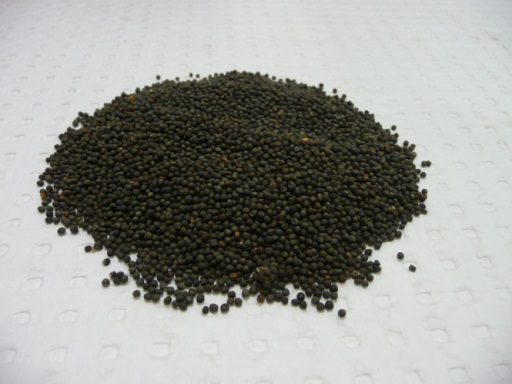Previous research conducted at UNE by Dr Reza Barekatain and Professor Bob Swick (Poultry CRC Sub-Project 2.1.8) showed that despite a desirable outcome in bird performance and economics of broiler diets containing whole canola seed (CS), these diets were not fully utilised when steam pelleted. Some of the limited digestibility of oil in the seeds was thought to be due to the oil bodies being surrounded by a peptide coating. Ways of breaking the peptide coating could include milling of the whole CS before adding it to the diet, use of exogenous protease enzymes in the diet, or manipulation of dietary fibre.
Reza, now a Senior Research Officer at SARDI, is seeking further to address the research gaps highlighted by the previous UNE project. Reza’s project (Sub-Project 2.1.10 – Interactions of canola seed source, pellet temperature and fibre for broilers) will further examine the variation between CS sources and the effect of pellet temperature and dietary fibre on utilisation of nutrients of CS for broilers. Several CS samples will be obtained from different geographical sites in Australia and analysed for nutrient composition and glucosinolate levels. Based on the analysis performed, five different samples will be selected for two feeding studies.
Additionally, Reza’s project will investigate the possibility of additional dietary manipulation, in particular dietary fibre, in order to improve nutritive value of canola seed, which builds on results from other Poultry CRC-funded projects in Norway and Australia. If fat digestibility is increased by such formulation strategies, then this is likely to lead to benefits when other whole oil seeds are used commercially.
Specifically, the project aims to:
- Investigate the degree to which feed processing, in particular temperature, can affect nutritive value of CS in broilers.
- Identify the variation between different sources of CS in Australia in terms of nutrient composition and the relationship between nutrient and AME.
- Investigate the role of dietary fibre content on nutrient utilisation of CS in broilers.
- Examine the interaction between tested experimental factors and CS in terms of performance and nutrient utilisation in particular fat.
Reza explained further, “There are two separate experiments; one at UNE and one at SARDI. Both involve factorial arrangement of treatments with CS as a main effect. The overall emphasis is on limiting factors for feeding broilers with CS in Australia, and addressing them with some practical solutions that are readily adoptable by the industry.”
Experiment 1 at UNE, in collaboration with Professor Bob Swick, will focus on CS source, their composition and relationship between samples and the nutritive value of the samples under different pelleting temperature. The primary focus will be on energy content of the seeds in a feeding study with Ross birds. In addition to correlation of energy and nutrient composition, feed consumption, body weight and feed conversion ratio will be reported. Digesta samples will be analysed for fat digestibility.
Experiment 2 at SARDI constitutes the major part of this 18-month project and it will be a floor pen broiler grow-out trial from 0-35 days. In this experiment, the effect of dietary fibre on efficiency of CS along with pellet processing will be investigated for broiler chickens. Nutrient utilisation and gut development will be examined for grower and finisher feeding periods. A comprehensive AME measurement, using total collection method, will also be conducted on birds concurrently with the feeding study.
With feed accounting for approximately 65% of live broiler production costs in Australia, any gain in feed efficiency will pay significant dividends. Based on the result of previous project (CRC 2.1.8), examination of FCR corrected to a common body weight indicated that feeding of CS was economically advantageous when compared to solvent canola meal plus canola. Reza’s present study will build on the economic benefits previously outlined in the final report for CRC project 2.1.8.


